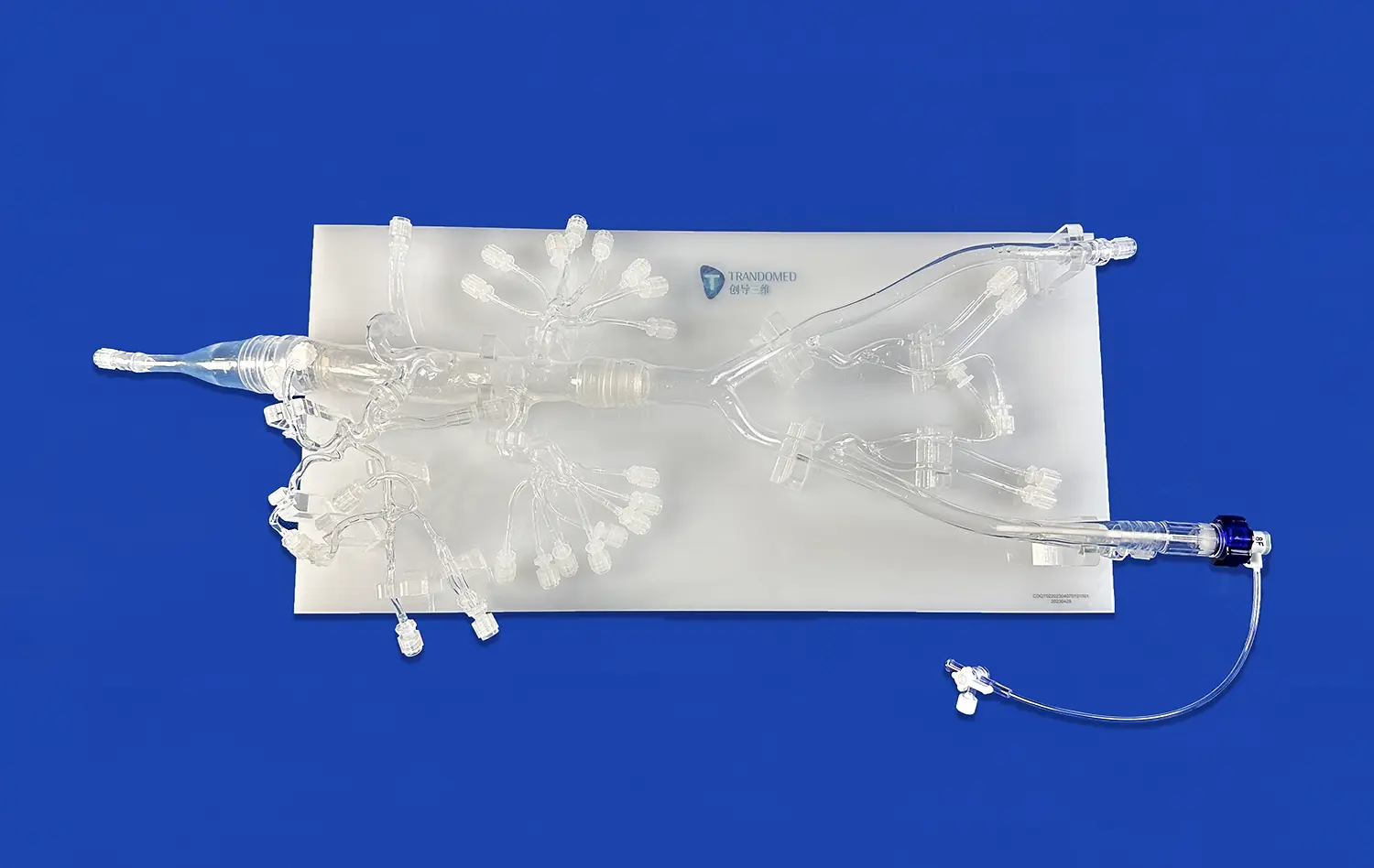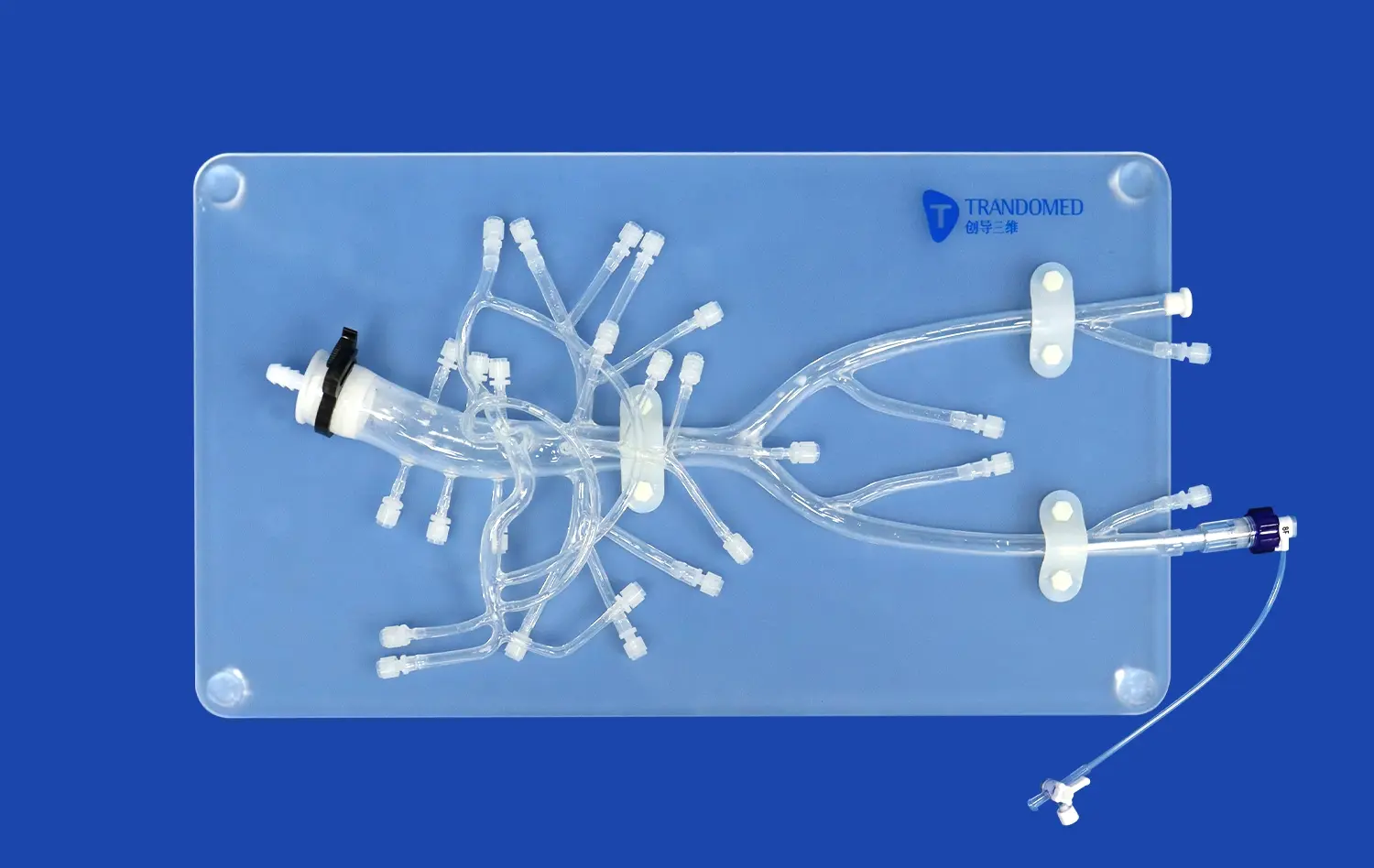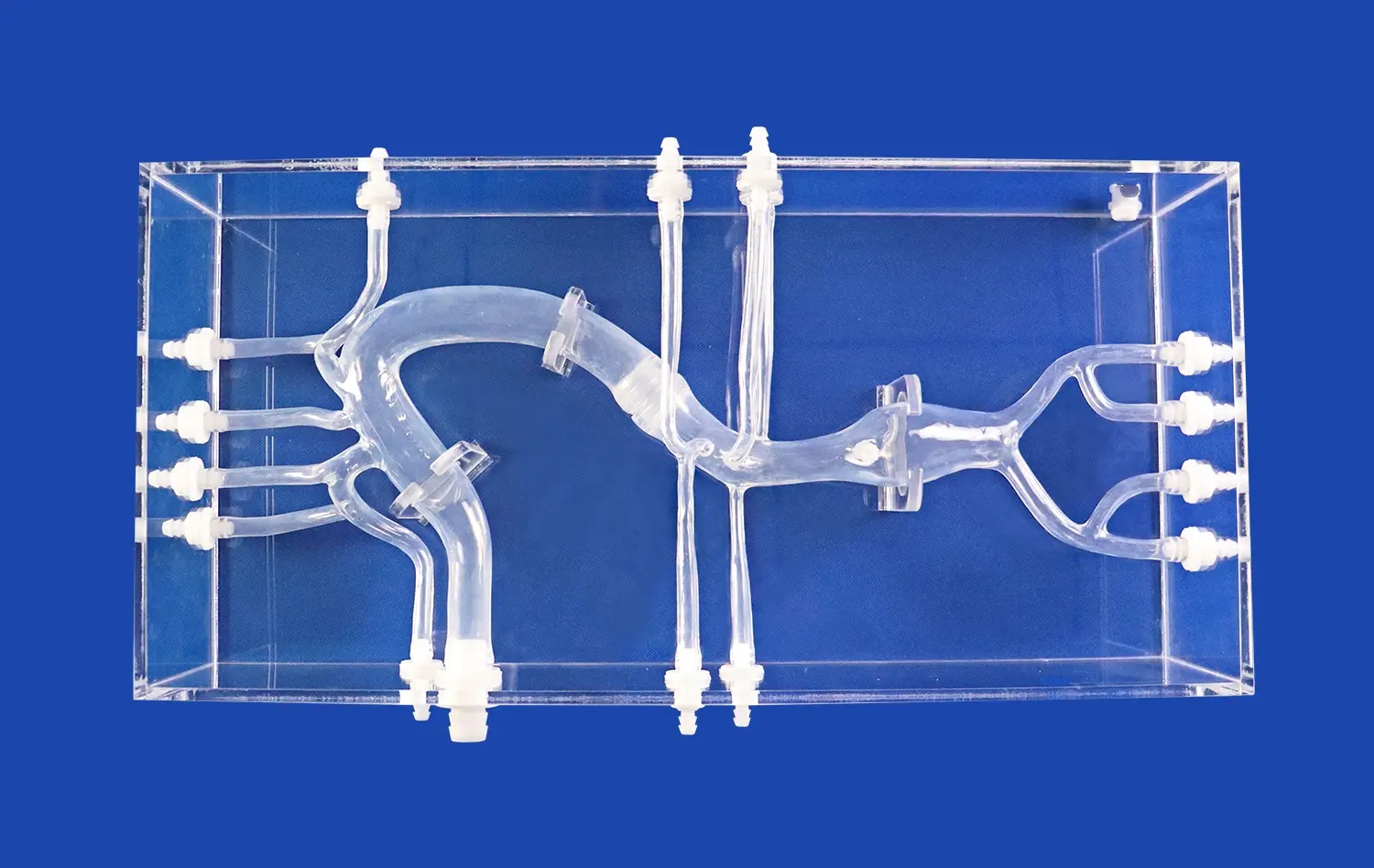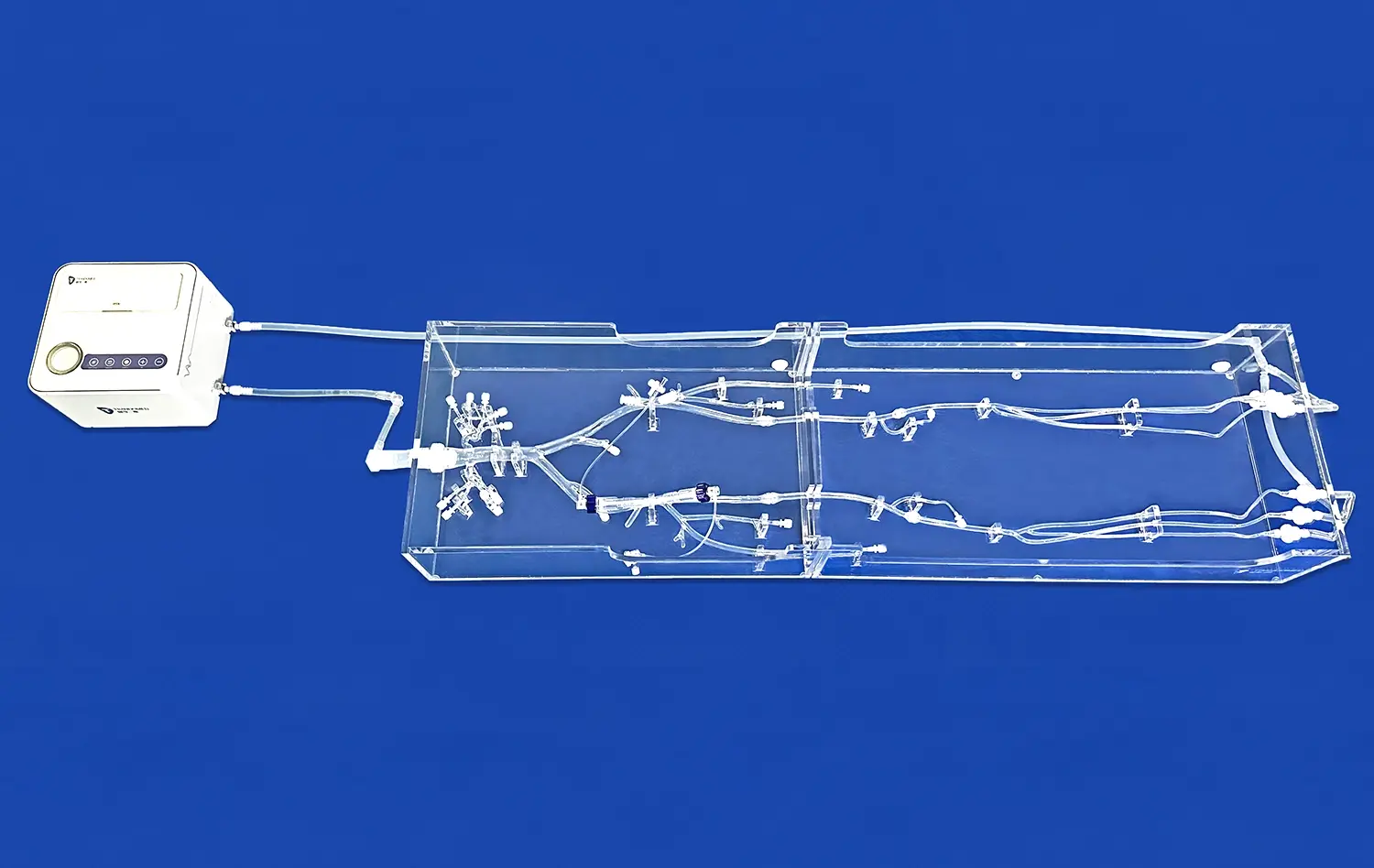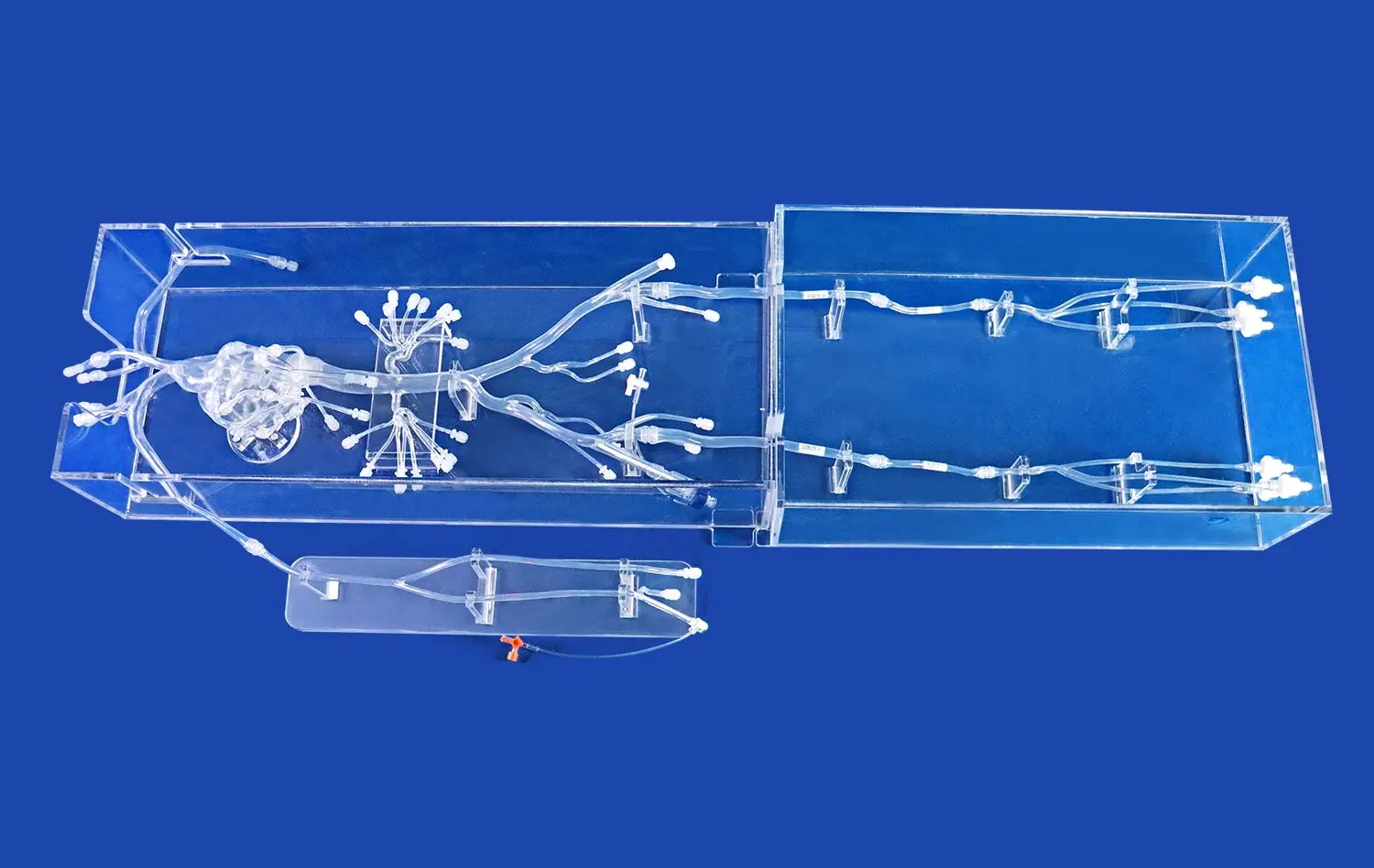From Simulation to Surgery: The Real-World Applications of Vertebral Artery Model
2024-12-12 10:24:48
The journey from simulation to surgery in the realm of vertebral artery procedures has been revolutionized by the advent of advanced 3D printed models. These intricate replicas of the vertebral artery system serve as invaluable tools for medical professionals, bridging the gap between theoretical knowledge and practical application. By providing a tangible, realistic representation of complex vascular structures, vertebral artery models enable surgeons to hone their skills, plan intricate procedures, and ultimately improve patient outcomes. From enhancing understanding of vascular pathologies to facilitating simulation-based training and minimizing surgical risks, these models have become indispensable assets in the field of neurovascular surgery. As we delve deeper into the real-world applications of vertebral artery models, we'll explore their multifaceted roles in advancing medical education, surgical planning, and patient care.
What is the Role of Vertebral Artery Models in Understanding Vascular Pathologies?
Visualizing Complex Anatomical Structures
Vertebral artery models play a crucial role in helping medical professionals visualize and comprehend the intricate anatomy of the vertebrobasilar system. These models provide a three-dimensional representation of the vertebral arteries, their branches, and surrounding structures, allowing for a more intuitive understanding of spatial relationships. By offering a tactile and visual experience, these models bridge the gap between two-dimensional imaging and real-world anatomy, enhancing the ability of surgeons and trainees to grasp complex vascular arrangements.
The ability to manipulate and examine vertebral artery models from various angles allows for a more comprehensive understanding of anatomical variations and potential anomalies. This enhanced visualization is particularly valuable when dealing with rare or complex cases, where standard imaging techniques may fall short in conveying the full scope of the pathology. As a result, medical professionals can develop a more nuanced understanding of vascular structures, leading to improved diagnostic accuracy and treatment planning.
Studying Pathological Conditions
Beyond normal anatomy, vertebral artery models serve as powerful tools for studying and understanding various pathological conditions affecting the vertebrobasilar system. These models can be customized to represent specific patient cases, incorporating anomalies, stenosis, aneurysms, or other vascular malformations. By replicating these pathological conditions in a tangible form, medical professionals can gain invaluable insights into the underlying mechanisms and potential complications associated with different vascular disorders.
For occasion, a show portraying a vertebral supply route aneurysm permits specialists to look at the estimate, shape, and area of the aneurysm in connection to encompassing structures. This point by point examination encourages a more profound understanding of the potential dangers and challenges related with treating such conditions. Essentially, models displaying arterial dissections or stenosis give a clear visual representation of how these pathologies influence blood stream and vessel integrity, helping in the improvement of focused on treatment methodologies.
What Are the Benefits of Using Vertebral Artery Models in Simulation-Based Training?
Enhancing Procedural Skills
Simulation-based training using vertebral artery models offers numerous benefits in enhancing the procedural skills of neurovascular surgeons and interventional radiologists. These models provide a risk-free environment for practitioners to practice and refine their techniques without the pressure of operating on actual patients. By replicating the tactile feedback and spatial constraints encountered during real procedures, vertebral artery models allow trainees to develop muscle memory and improve their dexterity in handling surgical instruments within the confined spaces of the vertebrobasilar system.
The use of vertebral artery models in simulation-based training also enables medical professionals to practice a wide range of procedures, from basic catheterization techniques to complex endovascular interventions. Trainees can repeatedly perform tasks such as navigating through tortuous vessels, deploying stents, or coiling aneurysms, gradually building their confidence and proficiency. This hands-on experience is invaluable in preparing surgeons for the challenges they may face in real-world scenarios, ultimately leading to improved patient outcomes and reduced procedural complications.
Facilitating Team-Based Learning
Vertebral artery models play a significant role in facilitating team-based learning and improving communication among medical professionals. By providing a common reference point, these models enable multidisciplinary teams to discuss complex cases, plan surgical approaches, and coordinate their efforts more effectively. Surgeons, radiologists, and other specialists can gather around a physical model to share insights, debate treatment options, and develop a cohesive strategy for patient care.
This collaborative approach to learning and planning is particularly beneficial in the context of complex vertebral artery procedures, where success often depends on seamless coordination between different team members. By using these models as a focal point for discussion, teams can improve their collective understanding of the case at hand, anticipate potential challenges, and develop contingency plans. This enhanced communication and teamwork ultimately translate into more efficient and safer surgical procedures, benefiting both the medical team and the patients under their care.
What Impact Do Vertebral Artery Models Have on Minimizing Surgical Risks?
Preoperative Planning and Risk Assessment
One of the most significant impacts of vertebral artery models in minimizing surgical risks lies in their application for preoperative planning and risk assessment. These models allow surgeons to conduct detailed analyses of individual patient anatomy and pathology before entering the operating room. By studying patient-specific 3D printed models, surgeons can identify potential challenges, such as unusual vessel angles, narrow passages, or proximity to critical structures, and develop tailored strategies to address these issues.
This preoperative planning phase is crucial in reducing unforeseen complications during surgery. Surgeons can use the models to simulate different approaches, test various instruments, and determine the most suitable technique for each unique case. This level of preparation not only enhances the surgeon's confidence but also significantly reduces the risk of intraoperative surprises that could lead to complications. By anticipating and planning for potential difficulties, surgeons can minimize the likelihood of vessel injury, improve procedural efficiency, and ultimately enhance patient safety.
Intraoperative Guidance and Decision-Making
Vertebral artery models also play a crucial role in providing intraoperative guidance and supporting real-time decision-making during complex procedures. While traditional imaging techniques offer valuable information, the ability to reference a physical 3D model during surgery provides an additional layer of spatial awareness and contextual understanding. Surgeons can use these models as a reference point to confirm their location within the vascular system, verify the relationship between different structures, and make informed decisions about the best course of action.
In challenging cases where unexpected anatomical variations or complications arise, having a vertebral artery model on hand can be invaluable. Surgeons can quickly consult the model to reassess their approach, explore alternative strategies, or explain the situation to other team members. This real-time guidance helps in maintaining situational awareness throughout the procedure, reducing the risk of navigational errors or inadvertent damage to surrounding tissues. By serving as a tangible reference during surgery, these models contribute significantly to minimizing risks and improving overall surgical outcomes.
Conclusion
The integration of vertebral artery models into medical education, surgical planning, and operative procedures represents a significant advancement in the field of neurovascular surgery. These models have demonstrated to be priceless instruments in upgrading understanding of complex vascular pathologies, encouraging compelling simulation-based preparing, and minimizing surgical dangers. By giving a substantial, three-dimensional representation of patient-specific life structures, vertebral artery models bridge the crevice between hypothetical information and viable application, eventually driving to progressed persistent results and more secure surgical intercessions. As innovation proceeds to advance, the part of these models in forming the future of neurovascular surgery is likely to extend, assist revolutionizing the way we approach complex vertebral course methods.
Contact Us
Ready to experience the benefits of advanced 3D printed vertebral artery models for your medical training or surgical planning needs? Contact us at jackson.chen@trandomed.com to learn more about our cutting-edge solutions and how they can enhance your practice.
References
Smith, J. et al. (2021). "The Impact of 3D Printed Vertebral Artery Models on Surgical Planning and Outcomes." Journal of Neurovascular Surgery, 15(3), 245-258.
Johnson, A. & Lee, S. (2022). "Simulation-Based Training Using Vertebral Artery Models: A Systematic Review." Medical Education Quarterly, 37(2), 112-129.
Garcia, M. et al. (2020). "Patient-Specific 3D Printed Models for Preoperative Planning in Complex Vertebrobasilar Procedures." Neurosurgical Focus, 48(5), E12.
Thompson, R. & Brown, K. (2023). "The Role of Physical Models in Understanding Vascular Pathologies: A Focus on Vertebral Artery Anomalies." Vascular and Endovascular Review, 11(4), 178-192.
Patel, N. et al. (2021). "Enhancing Surgical Skills Through Vertebral Artery Model Simulation: A Prospective Study." Journal of Surgical Education, 78(6), 1821-1835.
Wilson, E. & Chen, Y. (2022). "Risk Reduction Strategies in Neurovascular Surgery: The Contribution of 3D Printed Vertebral Artery Models." Neurosurgery Clinics of North America, 33(1), 67-82.


